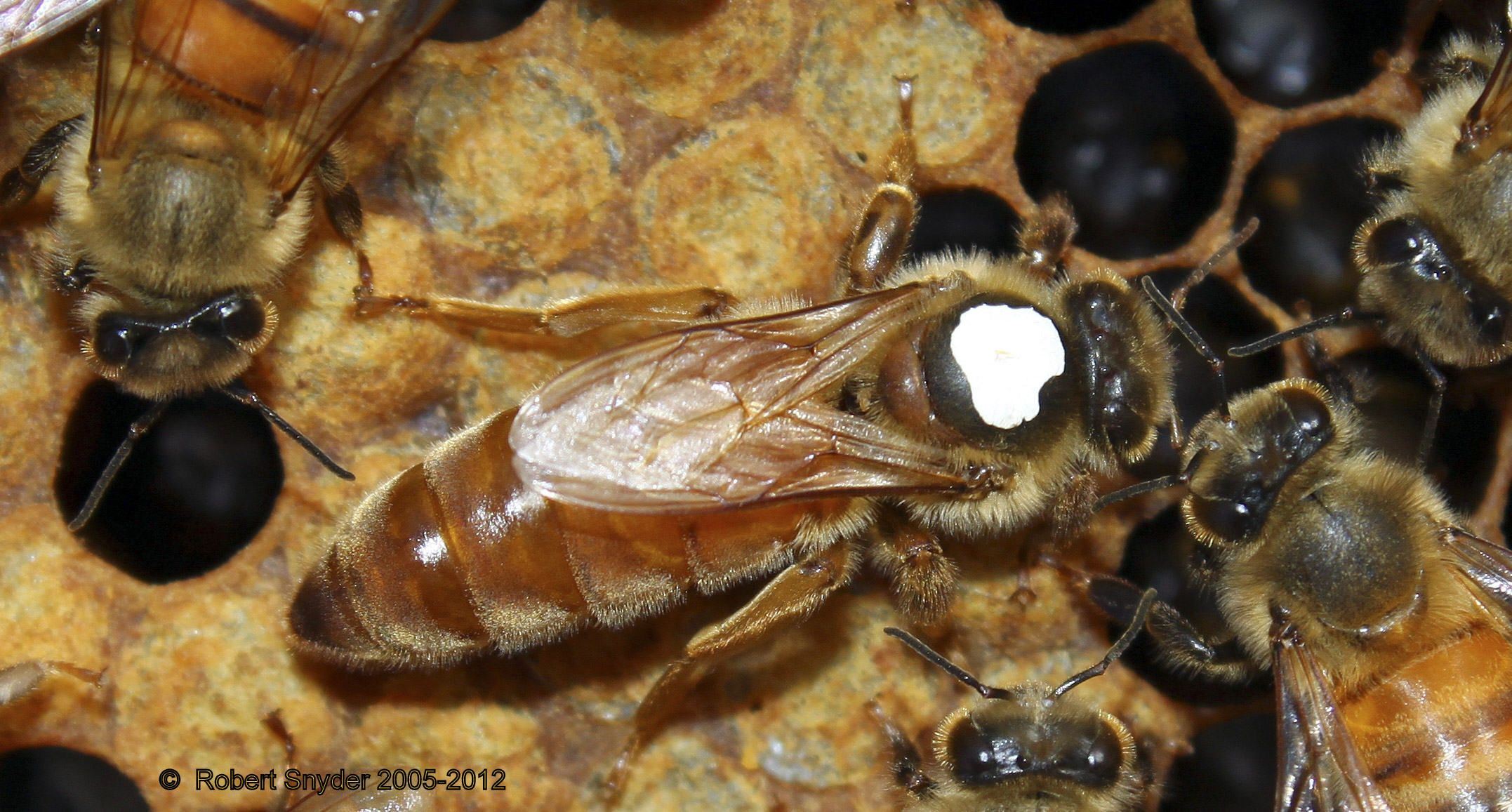Queenless or apparently queenless colony; body of dead queen found on bottom board or on the ground outside colony entrance; queen, if sighted, with body injury.
An adult queen (or a partially developed queen pupa) may be found dead outside a hive or inside the hive on a bottom board. A dead adult or developing queen most likely represents:
Usurpation is unusual in European bees but occurs in as many as 20% of Africanized colonies. Colonies with dead adult/developing queens need to be managed and returned to queenrightqueenright:
a colony with a healthy, worker egg-laying queen; the opposite of a queenless colony condition within two to three weeks.
condition within two to three weeks.
A beekeeper may injure or drop a queen on the ground during hive manipulations, resulting in her being lost to her colony. To replace a missing queen, bees use emergency queen rearing if the queen dies suddenly, is removed, or is lost from her colony. This may occur naturally during swarming for example, when a queen may leave but not join the bivouac. Injury to a queen will often result in supersedure, provided the injury is not so severe that she cannot move.
Queens may be marked with a paint dot or one or both of her wings may be partially removed. Marking is normal, but paint should only be applied to the thoraxthorax:
the middle region of the adult bee body, which lies in between the head and the abdomen; consists of three segments: pro-, meso-, and meta-thorax; thorax attachments include three pairs of legs and two pairs of wings
and only the distal part of her front wing removed. See marked queen.
Queens may lack a retinue, due often to beekeeper opening and smoking of hive during inspection. Injured queens also may lack a normal worker retinue. Queens not seen in an inspection may simply be avoiding light; failure to see a queen in an inspection is usually not due to an injury.
To avoid queen injury, remove frames slowly and inspect frames over the open hive in case she falls from the comb. Handling queens, such as when marking them, might result in the queen fainting.
queenless colony; queen failure
Carter A. n.d. The Three Different Types of Honey Bees in a Hive. Beekeeping Insider. Accessed 2023. https://beekeepinginsider.com/the-three-different-types-of-honey-bees-in-a-hive/
Moore PA, Wright ME and Skinner JA. 2019. Honey Bee Queens: Evaluating the most important colony member. Bee Health. Accessed 2023. https://bee-health.extension.org/honey-bee-queens-evaluating-the-most-important-colony-member/
Moore PA, Wright ME and Skinner JA. 2019. Queen Replacement (Basic Bee Biology for Beekeepers). Bee Health. Accessed 2023. https://bee-health.extension.org/queen-replacement-basic-bee-biology-for-beekeepers/
Anderson C. 2023 update. How to Mark a Queen Bee. Caroline Honeybees. Accessed 2023. https://carolinahoneybees.com/mark-your-queen-bee